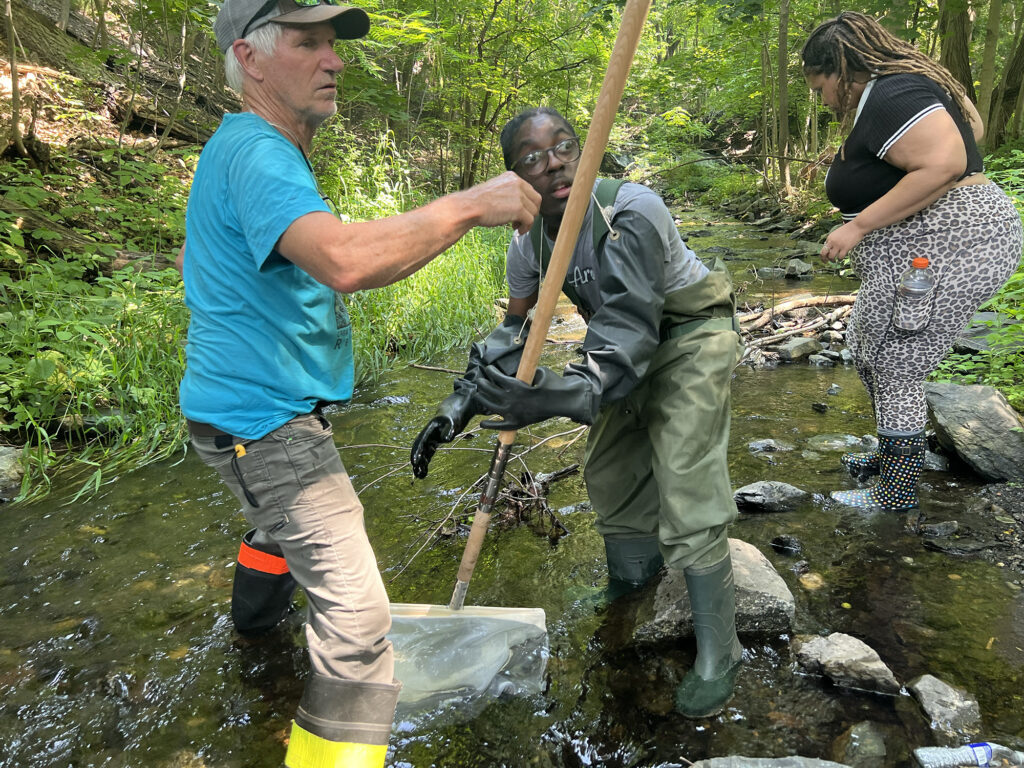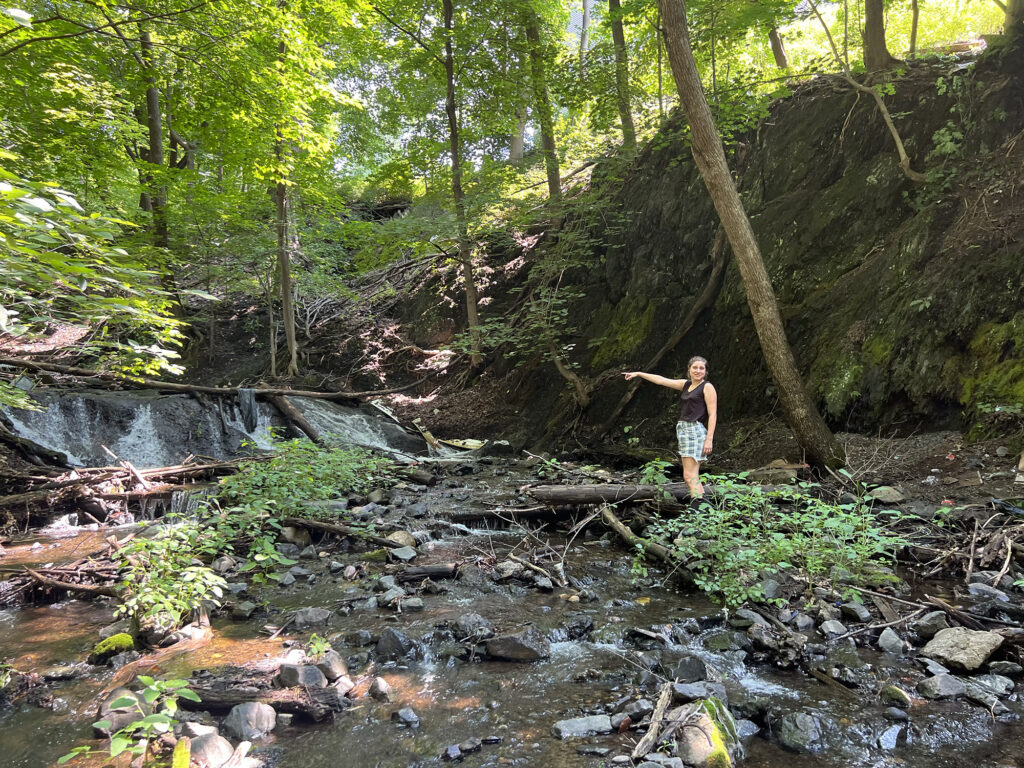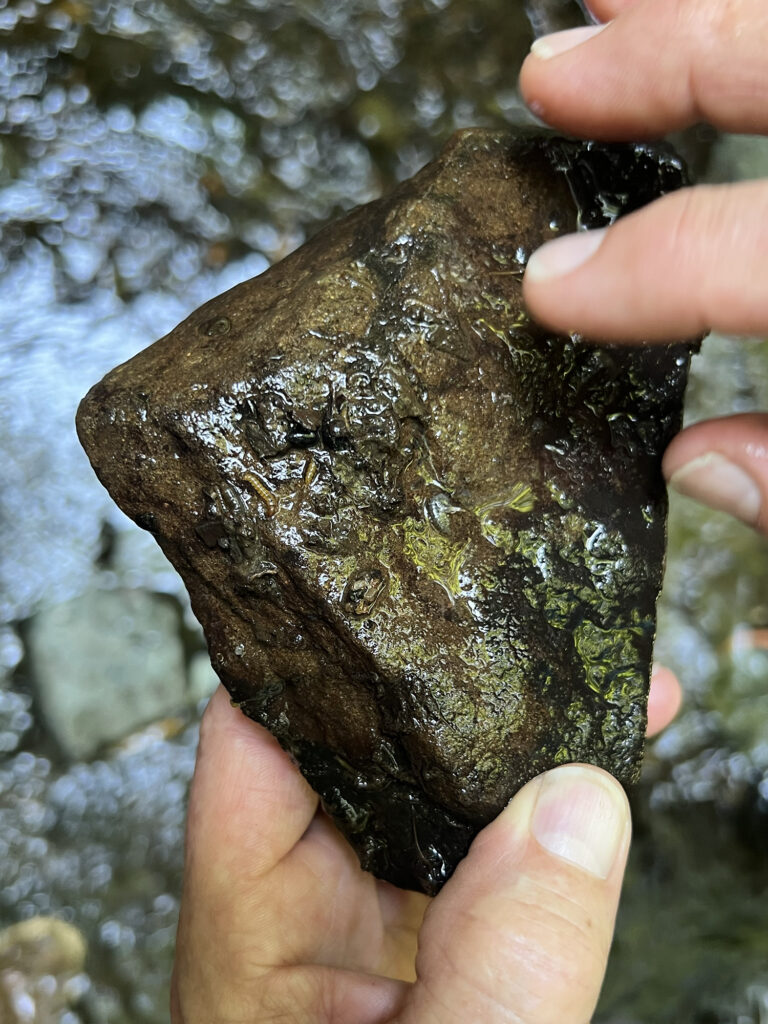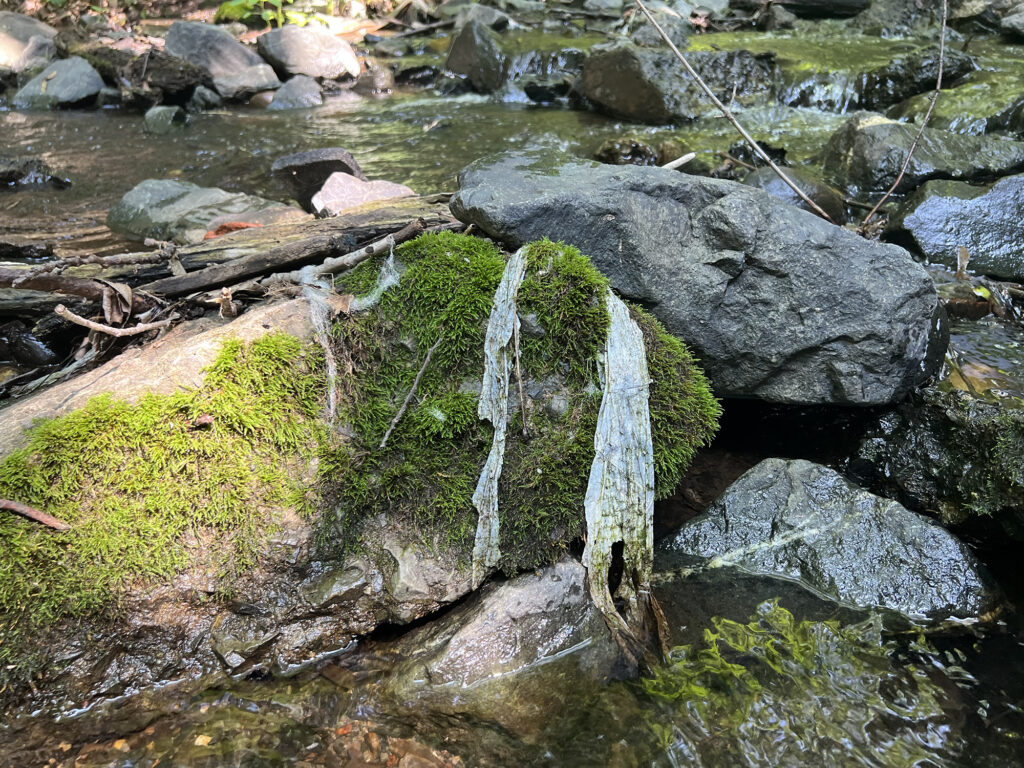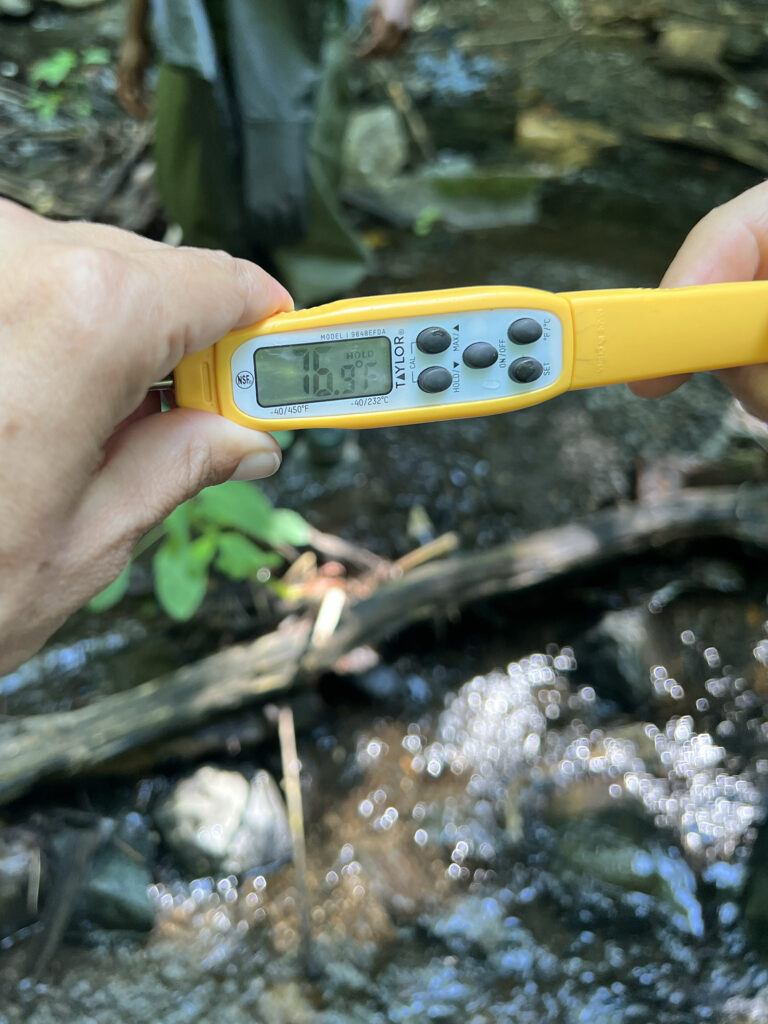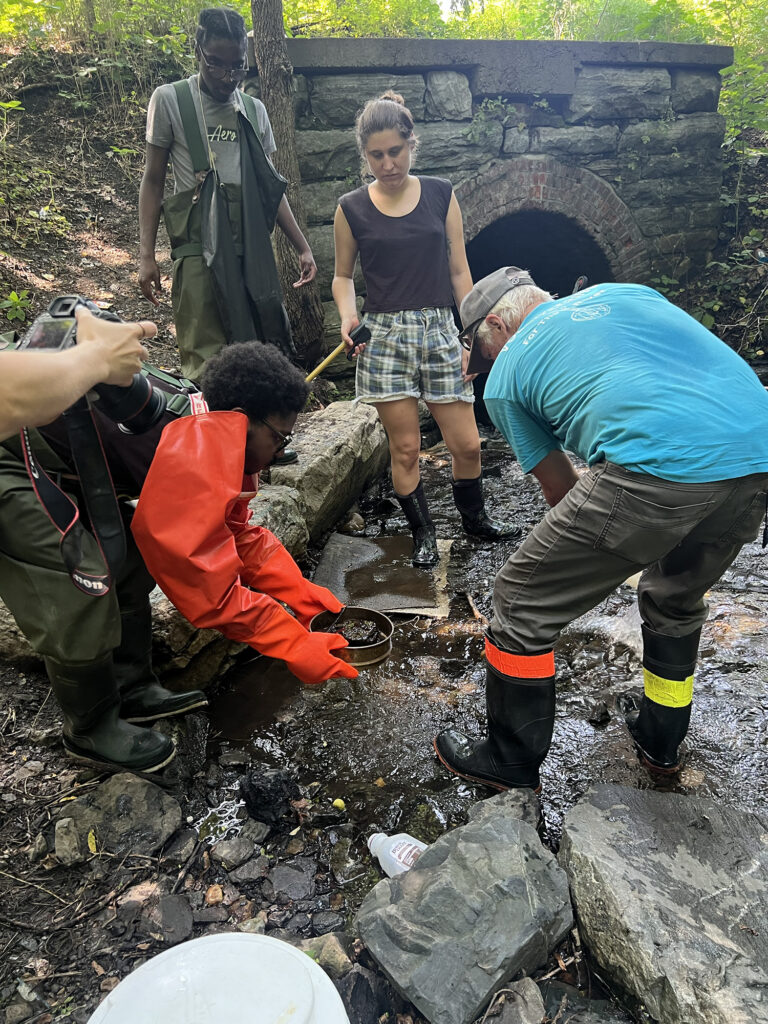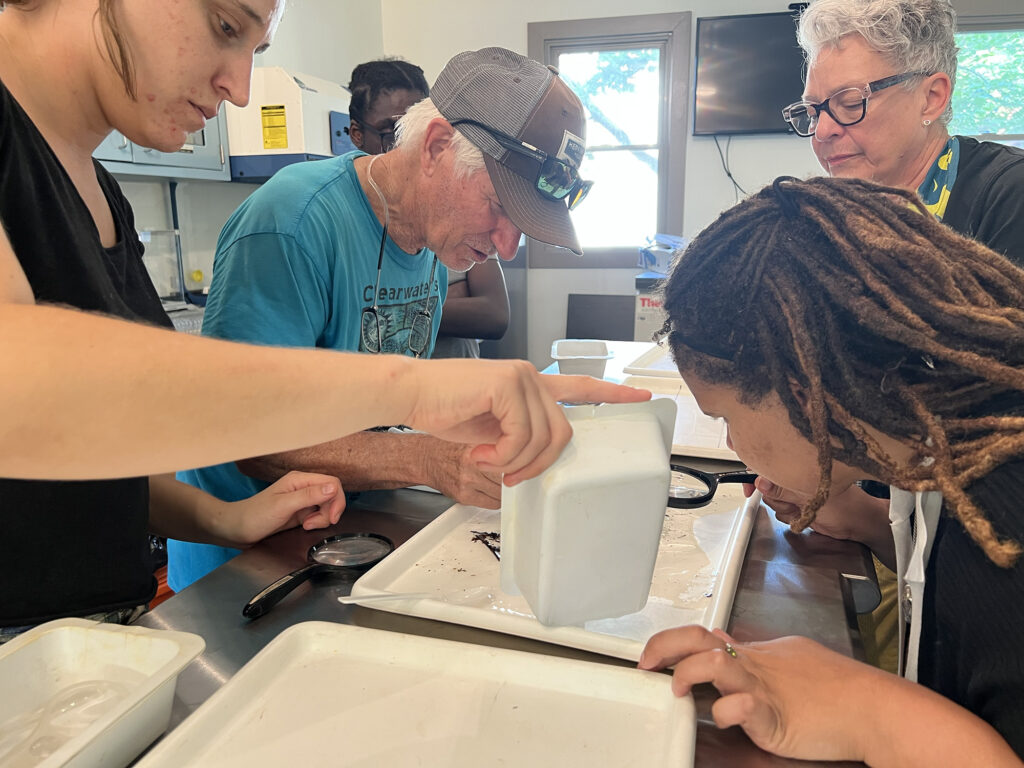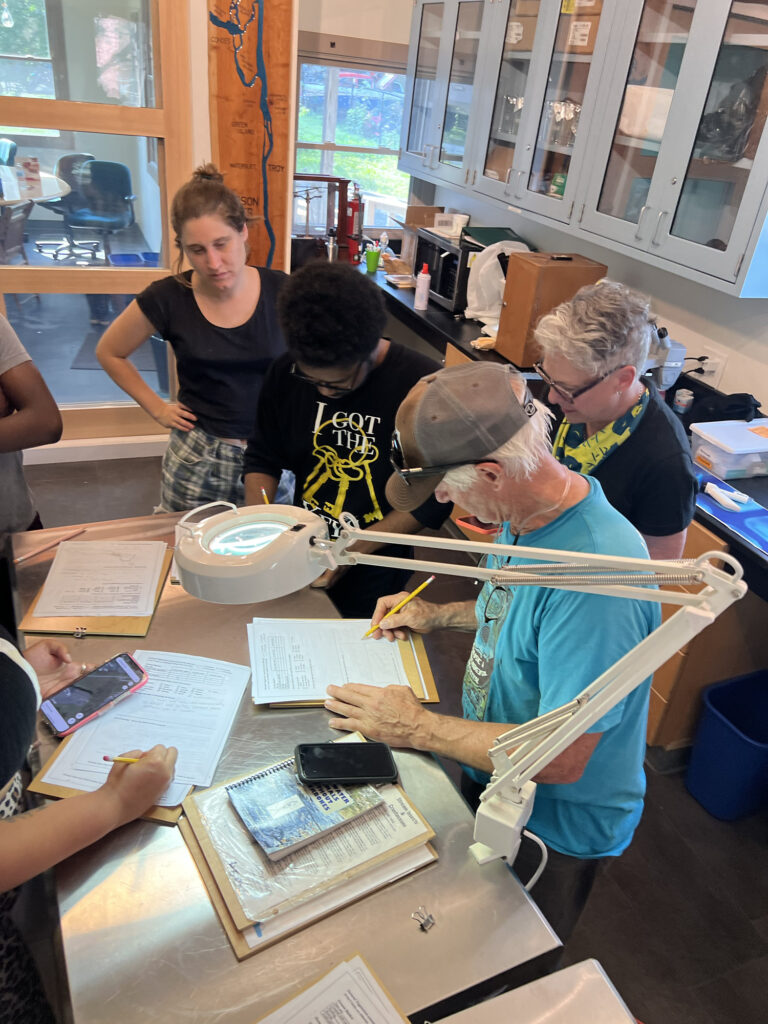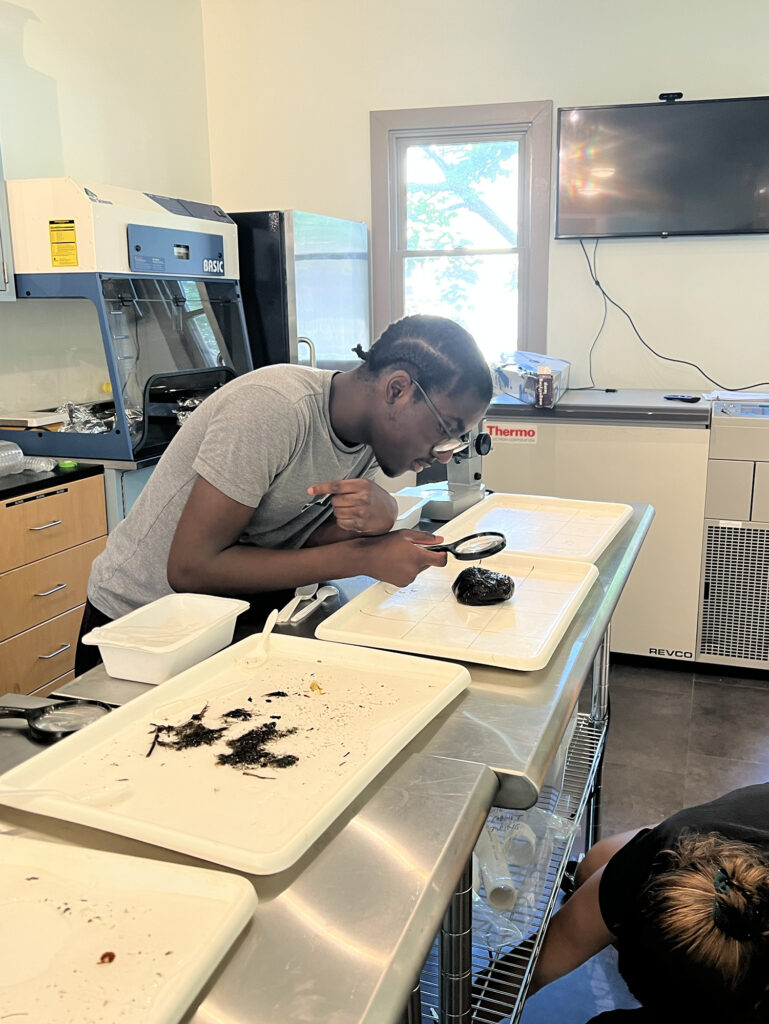For week 2 of Source to Estuary 2023, we returned to the Piscawenkill, a stream that flows roughly 5 miles from Bald Mountain Road in northeast Brunswick, through the Troy Reservoir, west through Frear Park, and down to Glen Avenue and the Uncle Sam bike trail in North Central Troy, where it becomes a “buried stream” flowing underground to the Hudson a half mile away.
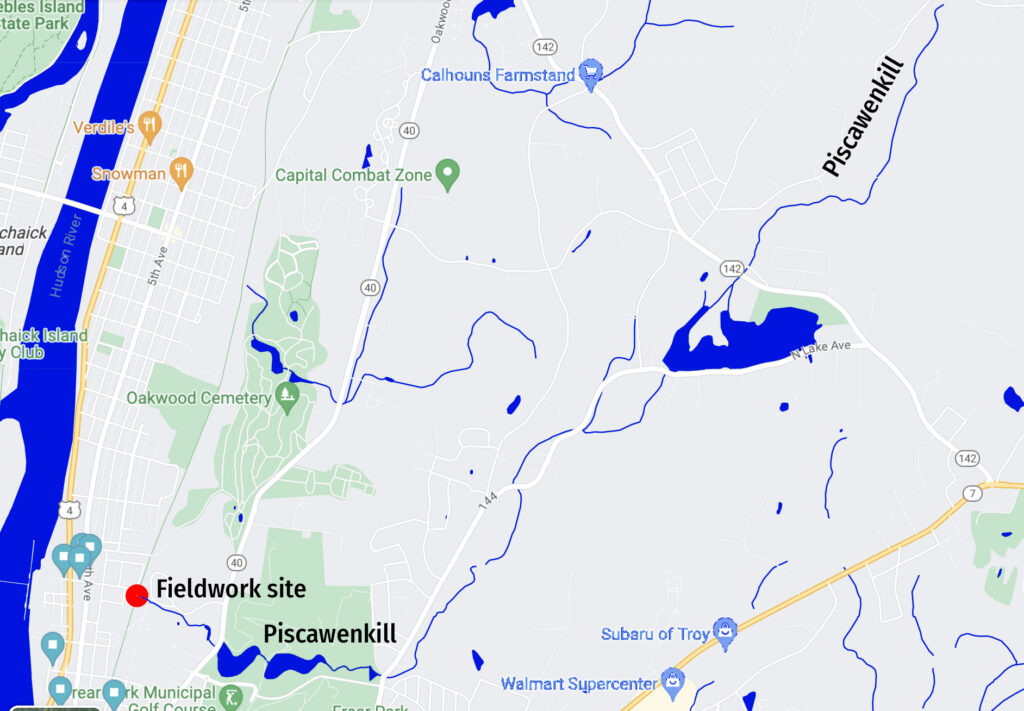
Our fieldwork this week consisted of a trash pick up and sampling for macroinvertebrates (small aquatic insects). We did these activities right at the point where the stream cascades down a steep slope between and housing complex and a parking lot and disappears into a 5 foot wide culvert. Along with a lot of trash (including a whole shopping cart pulled from the mouth of the culvert), media intern Aljahraun Wright, youth science fellow Muzzamil Moate, media mentor Alÿcia Bacon, and artist in residence Ipi Fernandez worked with macroinvertebrate mentor Doug Reed to collect several kick-nets worth of strained creek water, which we took back to the lab in a chilled, aerated bucket of stream water.
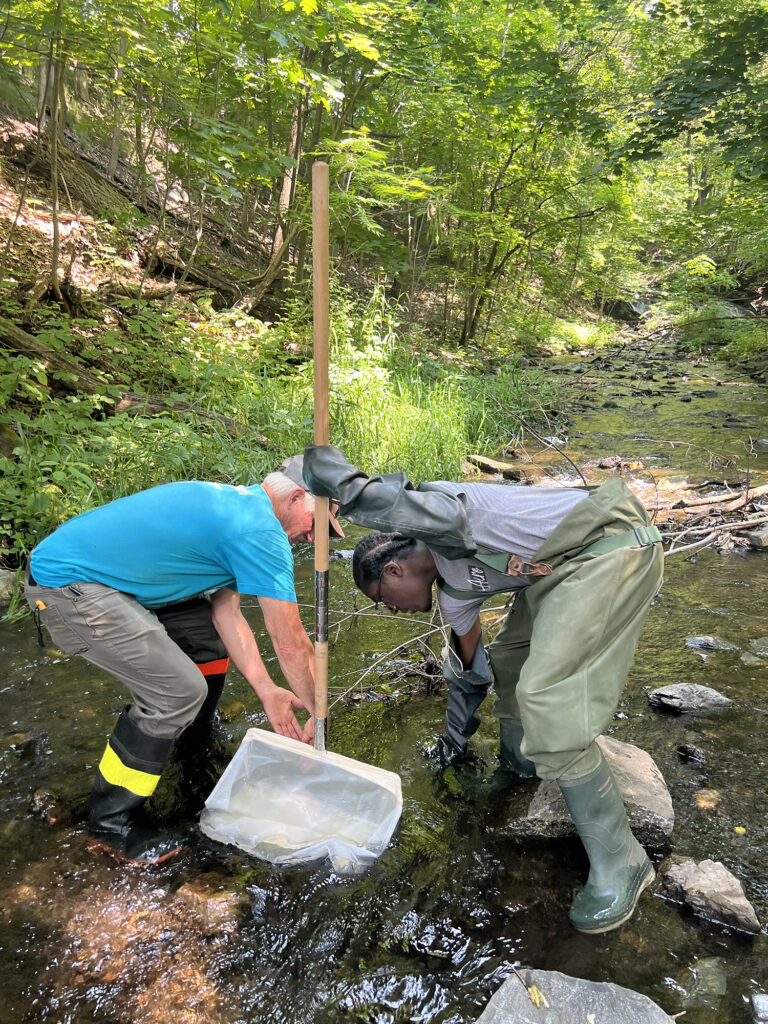
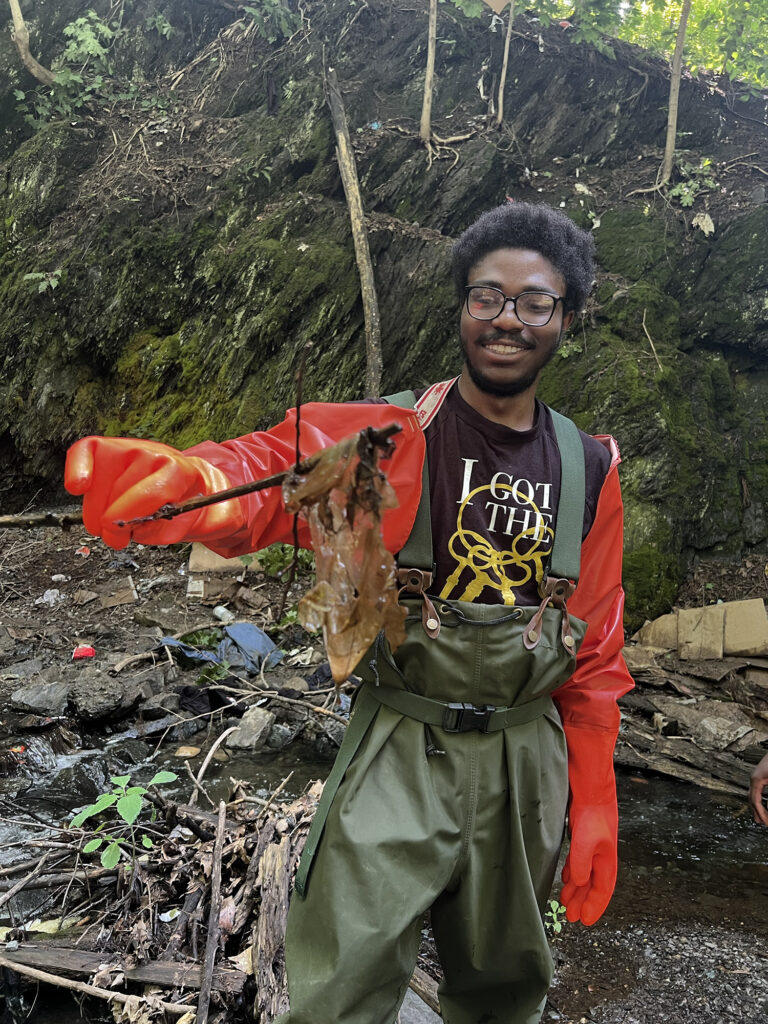

In the lab we used hand lenses and dissecting microscopes–and Doug’s expertise!–to identify a wide range of types of macroinvertebrates, from caddis flies and mayflies to midges and scuds. The macroinvertebrate species present in a given waterway can function as an “ecological indicator” that points to overall water quality, because some types of macroinvertebrates thrive only in clean, oxygen-rich water, while others can survive in highly polluted, low oxygen water. The types and quantities of macroinvertebrates we saw indicated that the water quality in this part of the Piscawenkill is not as bad as we might have expected for such an urban stream. NATURE Lab Coordinator Kathy High and Community Science Educator Ellie Irons provided documentation and support.
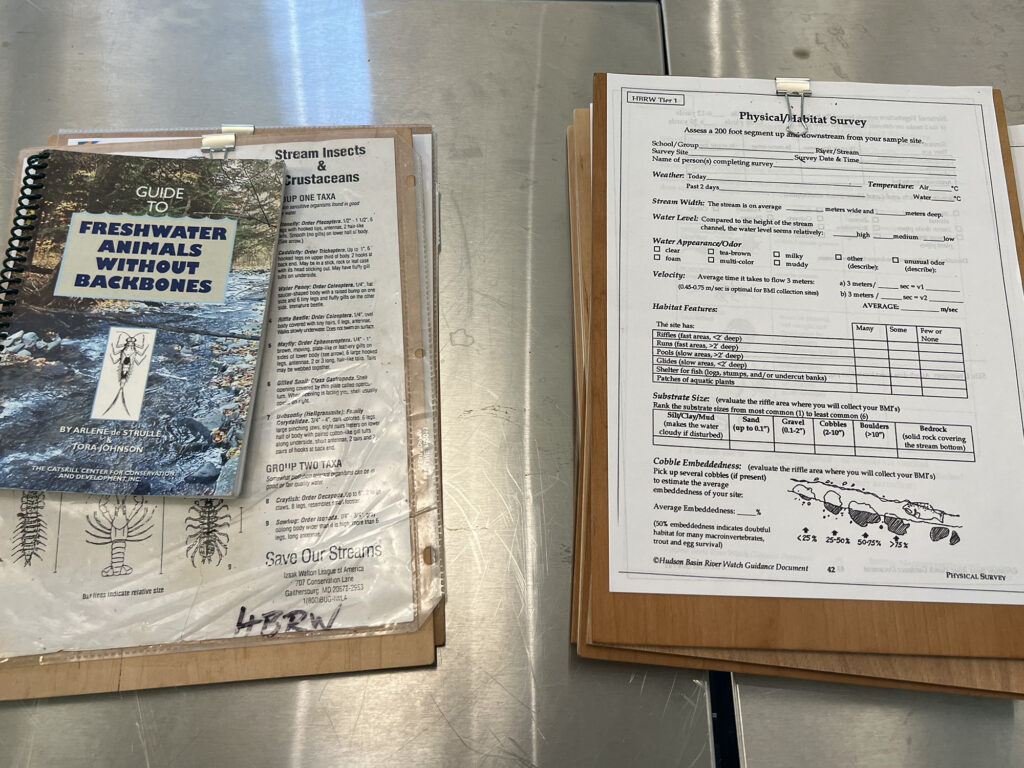
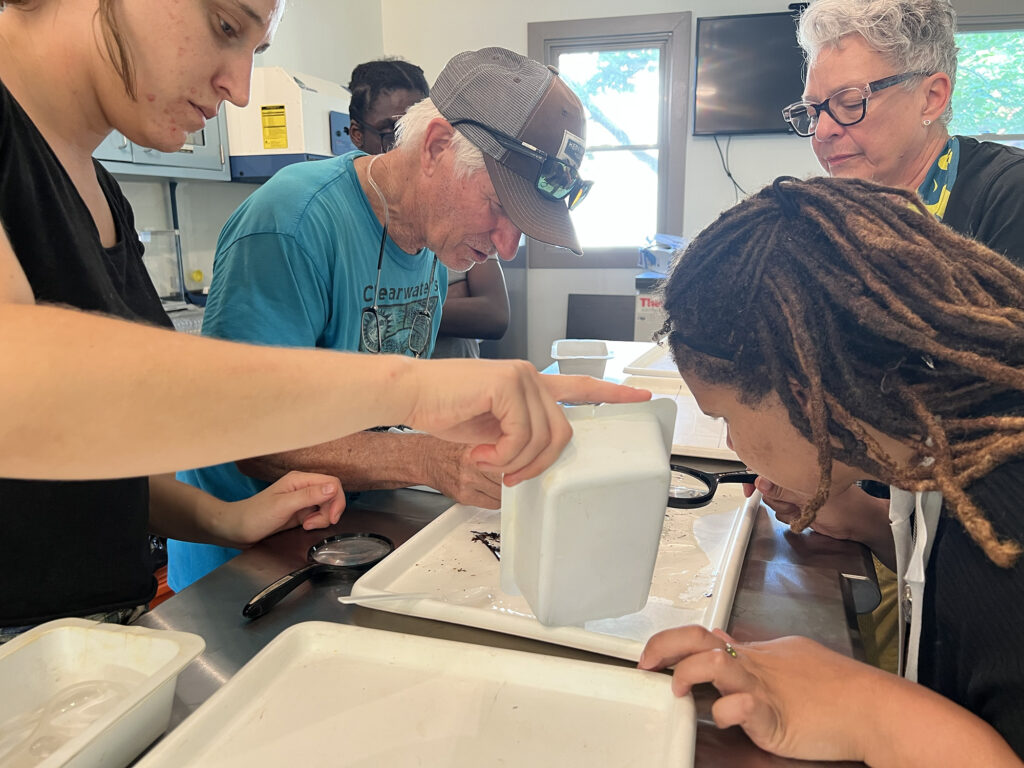
In coming weeks, we’ll check the stream for microplastic contamination with mentor Sarah Cadieux, and sample for sewage contamination as part of our regular Water Justice Lab monthly sampling with Riverkeeper.
To hear a bit from Doug and Muzzamil during last year’s macroinvertebrate sampling at other streams in the area, check out our 2022 interview series.
